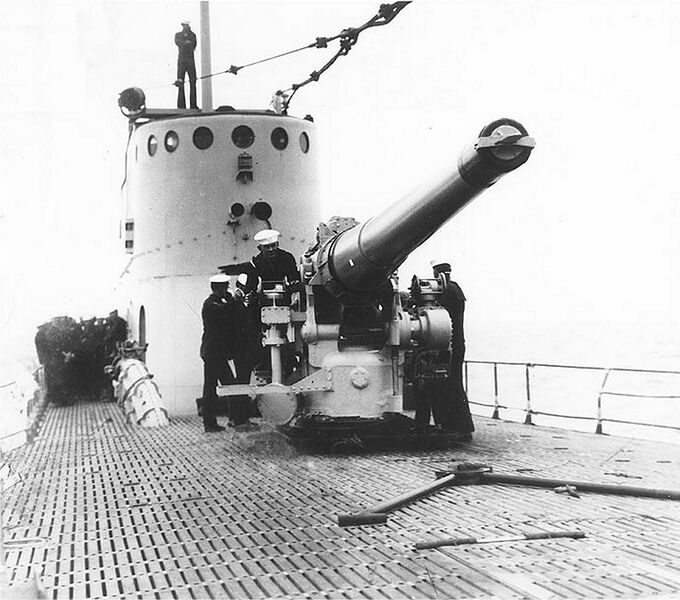V-4: Difference between revisions
Pbcjohnston (talk | contribs) mNo edit summary |
Pbcjohnston (talk | contribs) Added photos |
||
| Line 314: | Line 314: | ||
[[File:Red bar sub new 2.jpg]] | [[File:Red bar sub new 2.jpg]] | ||
[[File:Argonaut color mid 30s.jpg|left|500px]] | |||
<div style="text-align: justify;"><span style="color:#00008B">This is an excellent colorized photo of Argonaut proceeding up the Pearl Harbor channel into the harbor itself. The date is approximately 1933-1934. When the boat was renamed in 1931 she received the unique class identifier of A-1 on the side of the fairwater. The view is from Hospital Point looking west. By this time Argonaut had received a modification that installed a large escape trunk in the mine room hatch. The trunk protruded up above the deck line and can be seen in this photo on the far left, looking like a cylinder sitting on deck. The top of the trunk was flared out so that a McCann Rescue Chamber could mate to it. | |||
<small>U.S. Navy photo</small> | |||
[[File:Red bar sub new 2.jpg]] | |||
[[File:Argonaut drydock mid 30s.jpg|left|500px]] | |||
<div style="text-align: justify;"><span style="color:#00008B">Argonaut in drydock at the Pearl Harbor Navy Yard, approximately 1932-1934. Disregard the stamped notation at the top of the photo, placed there by an unknowing previous owner. This photo is definitely ''NOT'' a WWII photo. The boat is still painted haze gray, which places the date of this photo prior to 1935 when a Submarine Force wide change was made to the paint scheme, to an overall flat black. Note the sailor on the forward deck that gives scale to this huge submarine. | |||
<small>Photo in the private collection of Ric Hedman</small> | |||
[[File:Red bar sub new 2.jpg]] | |||
[[File:Nautilus Argonaut.jpg|left|500px]] | |||
<div style="text-align: justify;"><span style="color:#00008B">[[168|'''Nautilus (SS-168)''']], Argonaut, and what is most likely [[167|'''Narwhal (SS-167)''']] moored together in the early 1930's. They appear to be moored to the Navy docks in Honolulu Harbor, Pier 5 to the left and pier 5A to the right. The boats still occasionally moored in Honolulu, mostly for public relations events. | |||
<small>U.S. Navy photo</small> | |||
[[File:Red bar sub new 2.jpg]] | |||
<center>[[V-class|Return to the V-class page]] | [[Submarine Classes|Return to the Submarine Classes page]]</center> | <center>[[V-class|Return to the V-class page]] | [[Submarine Classes|Return to the Submarine Classes page]]</center> | ||
[[File:Red bar sub new 2.jpg]] | [[File:Red bar sub new 2.jpg]] | ||
Revision as of 13:24, 30 June 2023
Design, Construction, and Naming Notes
V-4 was a giant. At 381 feet long and a displacement of 3,046 tons submerged her size would not be exceeded by a USN submarine until the nuclear-powered USS Triton (SSRN-586) of 1955. Her great size was dictated by the need to achieve long range. Only a very large submarine would be able to carry the fuel necessary to span the Atlantic and Pacific in search of the enemy's merchantmen. V-4 was also to be equipped with the largest caliber gun ever installed on a USN submarine, two 6"/53 caliber Mk 17 guns, one forward and one aft of the conning tower fairwater in open mounts.
Her great range enabled V-4 to go to an enemy's coastline and lay an effective minefield. The minelaying gear was unique to the boat, and it occupied the after end. Space was provided for sixty huge Mk 11 mines and specialized, automatic, hydraulically operated handling gear. The mines were launched from two large aft facing tubes, and the mines could be laid while the boat was completely submerged. She also was equipped with four 21-inch torpedo tubes forward, with a capacity of 20 Mk 14 torpedoes.
During the construction of V-4, the Navy began to experiment with welding. This new and as-yet unproven process was used in certain non-critical areas like superstructure framing, pipe brackets, and interior deck joinery. The remainder of her construction was traditional riveting. The Navy's attitude towards this potential paradigm shift in submarine construction remained rather tepid for the next six years as they gained confidence in this radical change, and as they worked out labor and organizational issues. Please read this article that deals with this important subject.
All of the V-boats, but especially the huge V-4, suffered from an underdeveloped diesel engine industrial base in the United States. The industry was still in its infancy in the U.S., and the Navy was forced to rely on license-built derivations of German MAN company designs. The V-4 was definitely underpowered, with her plant consisting of two direct drive 1,400 hp BuEng/MAN main propulsion diesels, and one 450 hp BuEng/MAN generator engine. The Navy specified 15 knots for this boat, and she struggled to make that.
Once commissioned the Navy got a chance to try her out. The minelaying gear proved to be finicky and difficult to maintain and the minelaying role was ultimately unpopular with the force. V-4 was a slow diver with sluggish underwater maneuverability and her engines were not reliable. Despite this, the boat provided good service to the fleet during the 1930's. On February 19, 1931 she was renamed Argonaut. Noted historian John D. Alden maintains that she was never officially redesignated into the general SS series (her hull number would have been 166), and has stated that she remained designated SM-1 until September 22, 1942. However, the authors have uncovered photos of her from the late 1930's that show her with 166 painted on the side of her fairwater. This would not have been done without official approval, and therefore the official redesignation is likely true. It is possible that the otherwise meticulous Alden simply missed the document concerning her redesignation during his research, or it had been destroyed or lost and was not available to him.
By the start of the war she was worn out and in need of a thorough overhaul. An early 1942 yard period at Mare Island completely reconditioned the boat, giving her new General Motors engines, air conditioning, a torpedo data computer, radar, longer periscopes, and two aft facing topside torpedo tubes. At that time it was felt that she could still prove useful as a minelayer so her aft minelaying gear was retained. She arrived back in Pearl Harbor in early August just in time to be assigned to the Makin Island raid, where it was realized her great size would enable her to carry dozens of Marines. The Pearl Harbor Navy Yard hurriedly stripped most of the mine handling gear from the after rooms and installed numerous bunks for the Marines. This capability gave her a new lease on life and on September 22, 1942 she was redesignated APS-1 (Auxiliary Transport Submarine) to reflect this new mission.
The needs of the war effort forced the Navy to send her on general patrol duties, where her great size and barge-like maneuverability placed her at a disadvantage when dealing with the nimble Japanese destroyers. She made several war patrols before being caught by an IJN anti-submarine force off New Britain. She was sunk in battle in a combined depth charge and gunnery attack. 105 officers and men remain on eternal patrol.
Note: At the start of the war, the Navy had approximately 200 Mk 11 mines in their inventory, mines that had been specifically designed for this boat. Argonaut never laid a minefield in wartime, and what became of the unique Mk 11 mines is not known at this time. See this page for more information on this subject.
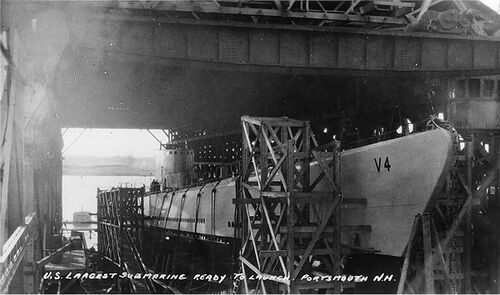
U.S. Navy photo
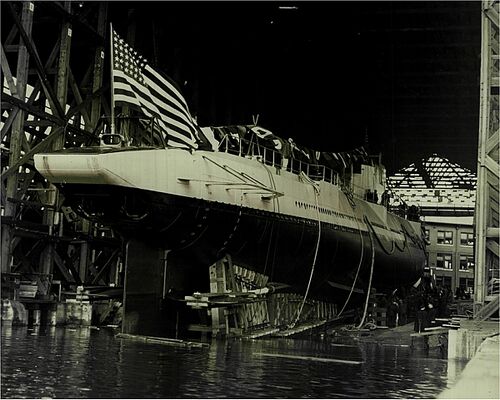
U.S. Navy photo
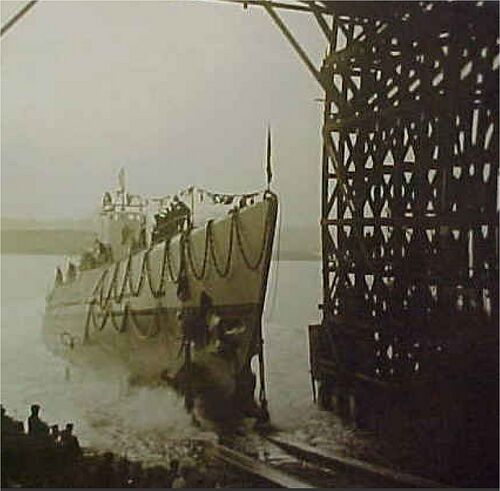
Photo courtesy of Navsource.org and the Boston Herald-Traveler
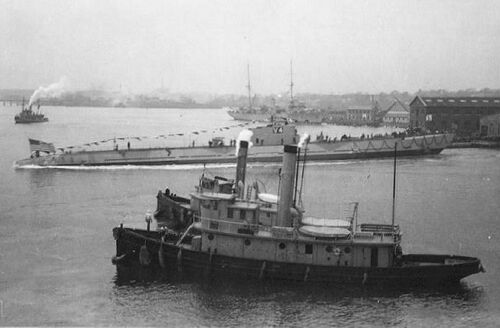
U.S. Navy photo
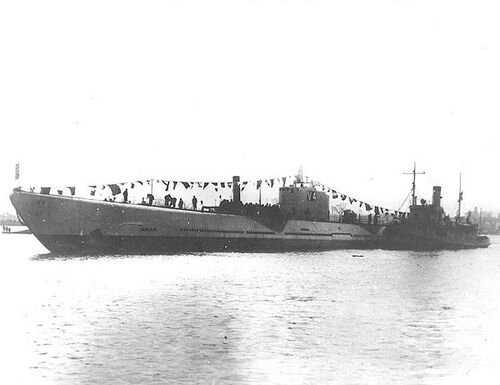
U.S. Navy photo
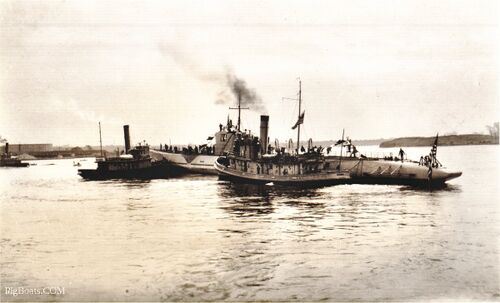
A number of interesting things are seen and happening in this photo. The launch is complete and the signal flags are coming down. The flags forward of the conning tower are being gathered up. The after string of flags is being loosened. A Bi-pod of boards supported the after string. A man has climbed to a cross brace to free them. A man stands behind him to steady him. A Chief or Officer is on the stern inspecting and ensuring that all is satisfactory.
The dark triangle seen between the tugs is the forward gun sponson. There is a similar one behind the conning tower hidden by the Mohave. The Mohave itself has just applied forward thrust to is propeller as evidenced by the wash seen at her stern. The white "splash" seen at the waterline at the side of Mohave is the outlet for the cooling water for the tugs' boiler.
The tug all the way to the left is taking charge of the building cradle seen floating next to it. A crew in a small boat is assisting.
Photo in the private collection of Ric Hedman
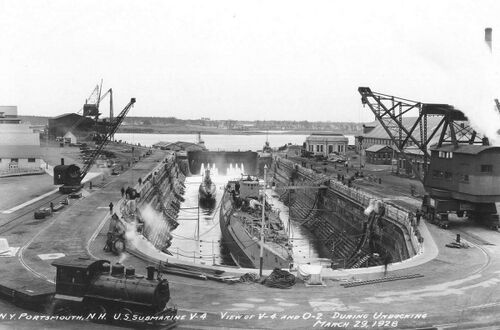
U.S. Navy photo
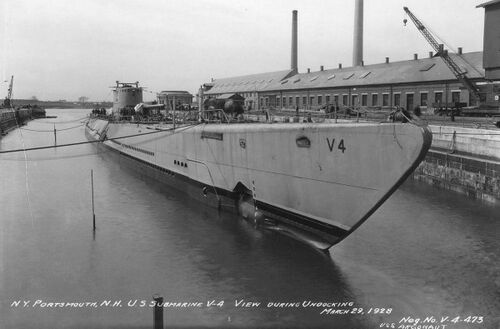
U.S. Navy photo

U.S. Navy photo
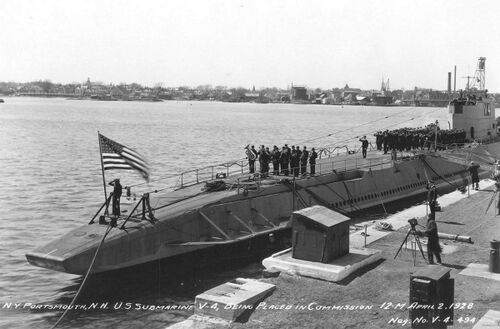
The notch in the edge of the deck on the starboard side was for a communications mast that would fold down into the notch. The mast is not yet installed in this photo. There is a similar notch for another mast in the edge of the deck forward of the forward deck gun.
U.S. Navy photo
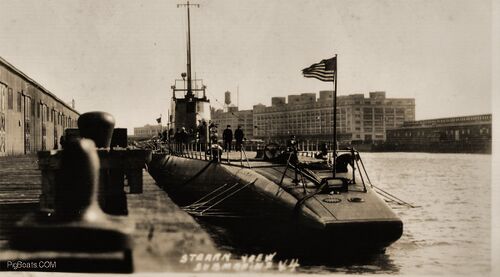
Photo in the private collection of Ric Hedman
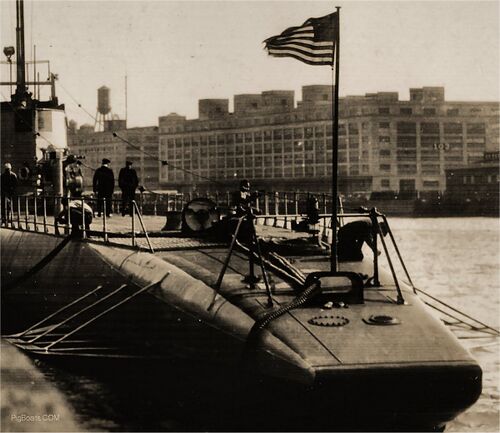
Photo in the private collection of Ric Hedman
Sea trials, June, 1928
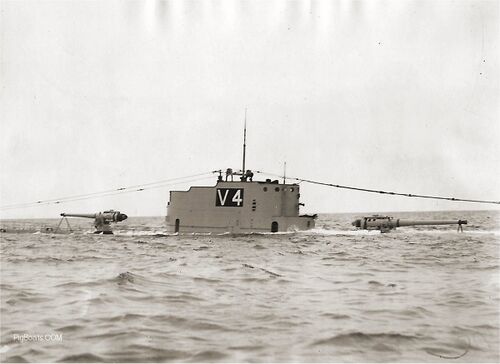
Her gun deck with her two 6"/53 caliber guns is just awash and the conning tower fairwater accesses are filling with water. The little splash of water seen just to the right of the forward fairwater access is coming from the ammunition hoist as it goes under water.
The short periscope at the front of the conning tower is the #1 periscope. It is offset to starboard by four feet off the center line (note its location in subsequent photos below) and is a short 'scope to be used before surfacing to check for obstacles. This periscope was later removed as unnecessary. The submarine had two centerline mounted regular periscopes that gave full visibility. These periscopes were all raised by electric motors and used a chain drive like a motorcycle type chain. They were very noisy. If you get a chance to see the 1931 movie "Seas Beneath" you can see and hear them in operation plus see some interior images of the submarine.
The ship's whistle can be seen sticking out at the front of the fairwater midway between the step and the top.
Photo in the private collection of Ric Hedman
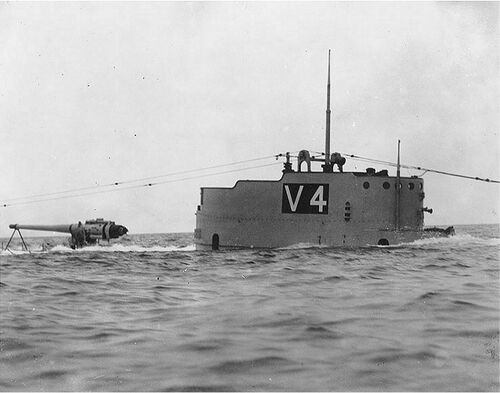
U.S. Navy photo
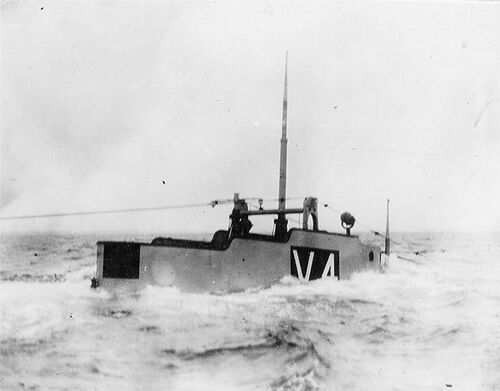
U.S. Navy photo

U.S. Navy photo

U.S. Navy photo
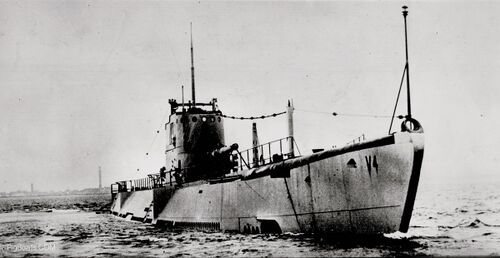
Photo in the private collection of Ric Hedman
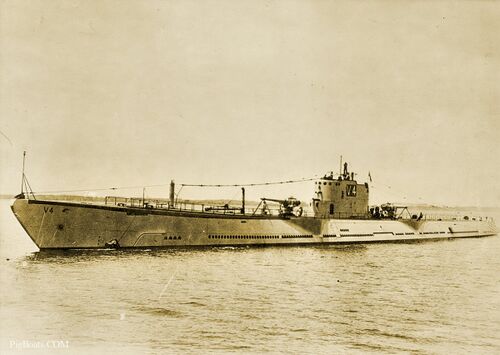
U.S. Navy photo
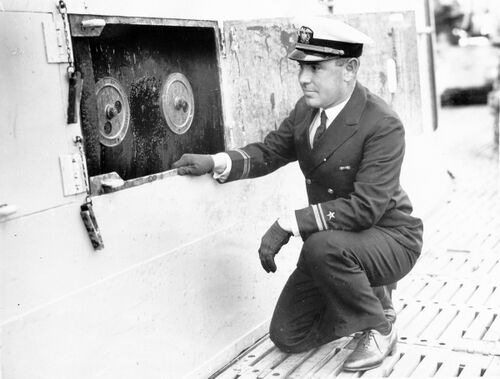
U.S. Navy photo
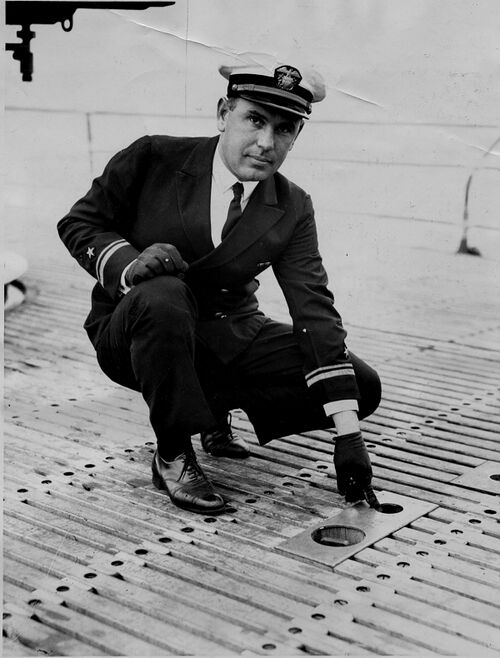
U.S. Navy photo
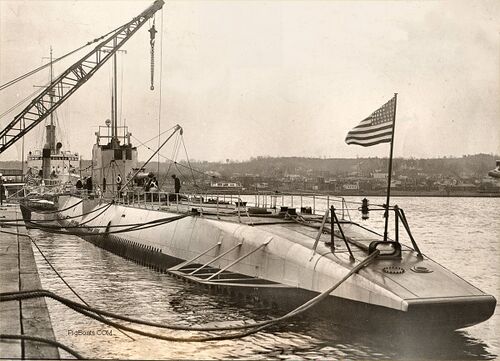
Just to the left of the door in the side of the fairwater is the after ammunition hoist. The shells for the guns were brought up from below this way. The shell and propellent powder bags were separate due to the weight involved. This made for easier and quicker handling.
the stern navigation light is mounted on the aft rail. The mooring lines are run through the after towing fairlead and lead to a set of bitts mounted on the aft deck.
Original News photo in the private collection of Ric Hedman.
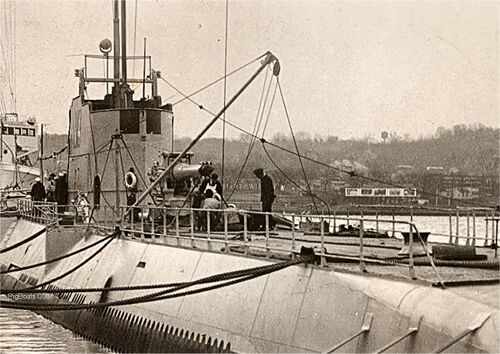
Original News photo in the private collection of Ric Hedman.
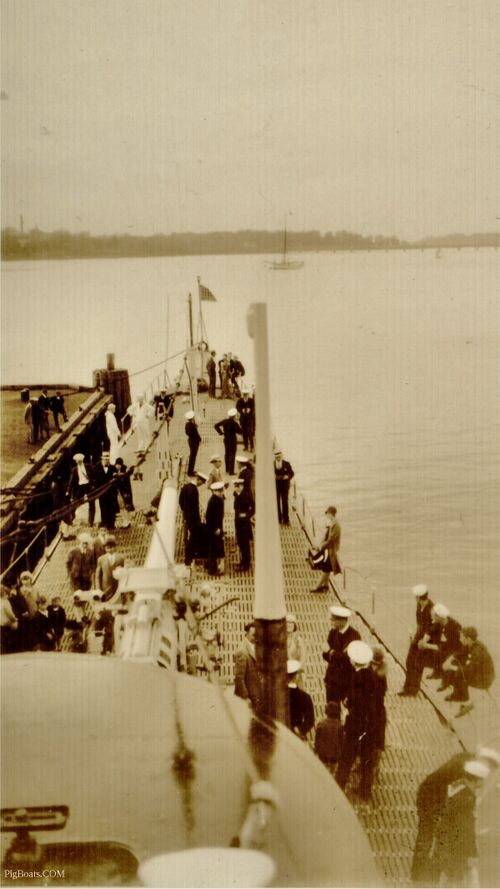
Original photo in the private collection of Ric Hedman
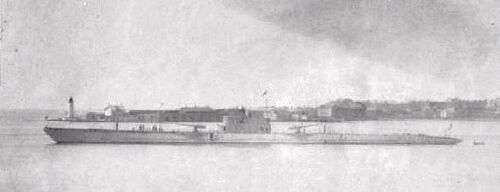
Photo in the private collection of Ric Hedman
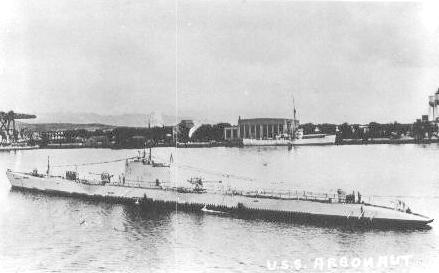
Photo in the private collection of Ric Hedman
Homeport shift to San Diego, 1929
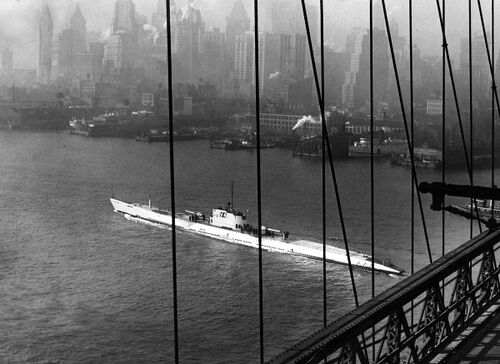
U.S. Navy photo

U.S. Navy photo
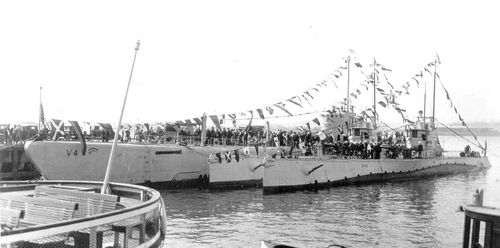
U.S. Navy photo
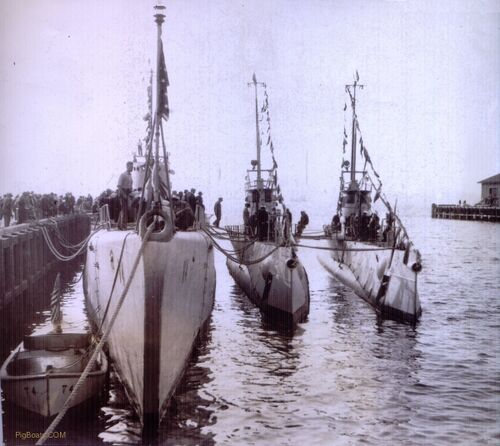
Seen in the lower left corner of the photo is one of the V-4's two launches. These were stored under the deck on the bow just aft of the forward torpedo room escape trunk. One was a rowing boat and the other a motorized launch. This is the motor launch.
Photo in the private collection of Ric Hedman
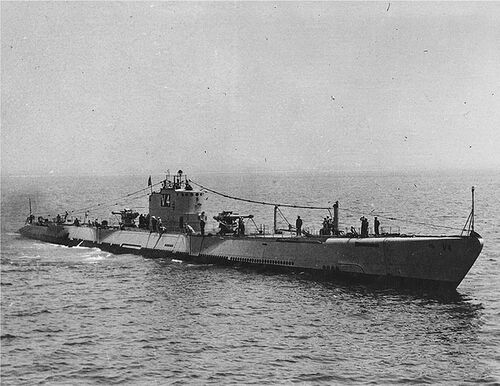
U.S. Navy photo
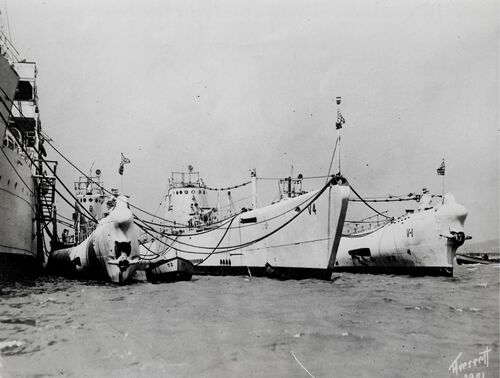
Photo in the private collection of Ric Hedman
Homeport shift to Pearl Harbor, 1932
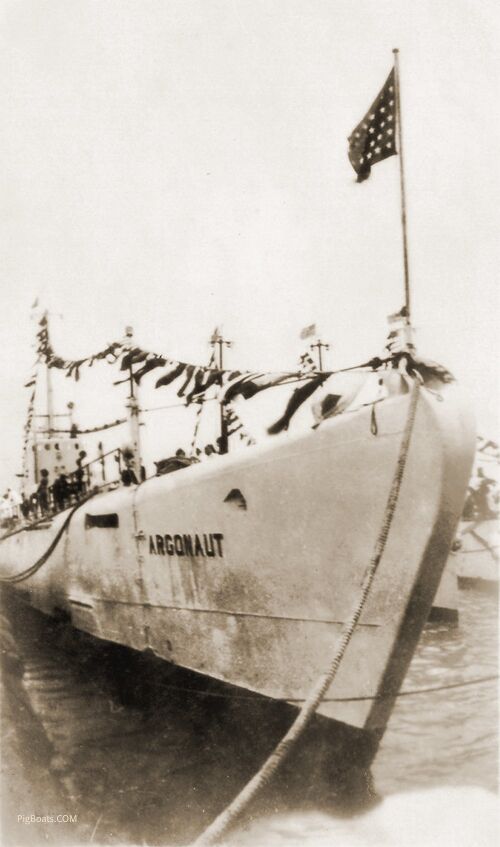
U.S. Navy photo
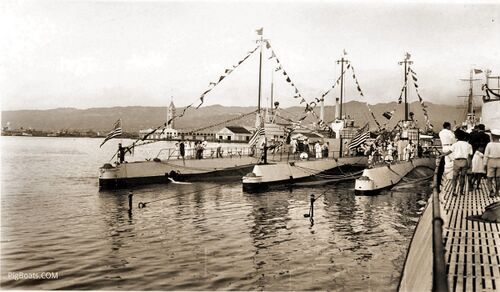
U.S. Navy photo
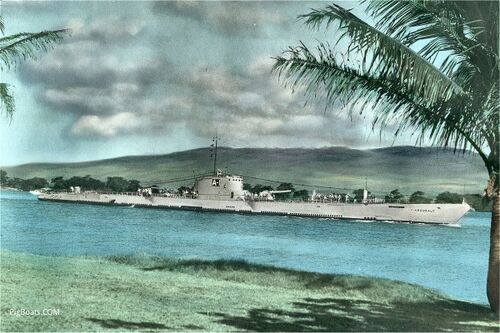
U.S. Navy photo
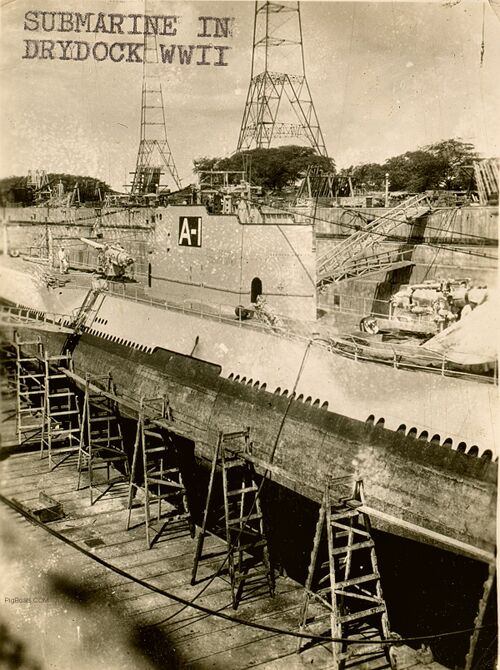
Photo in the private collection of Ric Hedman
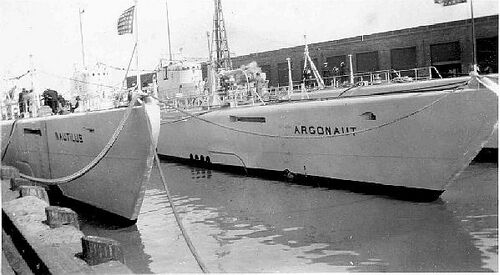
U.S. Navy photo
Page created by:
Ric Hedman & David Johnston
1999 - 2023 - PigBoats.COM©
Mountlake Terrace, WA, Norfolk, VA
webmaster at pigboats dot com

